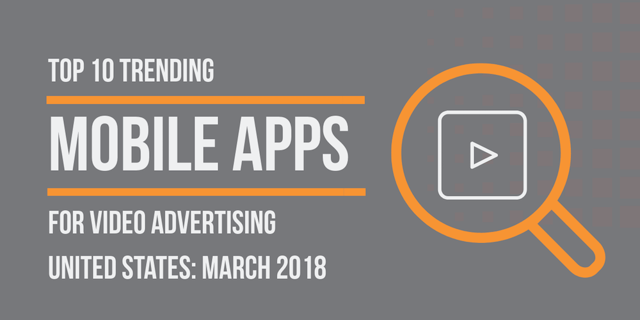
This week's review of ad fraud and quality in the digital advertising space.

Pixalate this week released a list of the top 10 trending mobile apps in video advertising based on programmatic video ad impression share of voice. This blog post gives marketers a new way to think about advertising within mobile applications by introducing brand new data and rankings to the programmatic advertising industry.
The full list of the top 30 trending apps is also available for download.

Google this week announced the official rollout of Exchange Bidding to its DoubleClick for Publishers customers, reported The Drum. The move comes as Google "aims to see off the challenge that header bidding poses to its dominance of the ad serving market," wrote The Drum. "Exchange Bidding offers publishers more options to monetize their display ad inventory by allowing multiple exchanges to compete equally in a unified auction," the article added.

Using data from Pixalate, eMarketer explores why some video ad units are more prone to ad fraud. "In March, Pixalate and OpenX cooperated on a study that found 11% of the traffic coming from video banner ads that are 300x250 pixels is [invalid]. The rate of ad fraud for that particular unit type was 31% higher than the average for all other video ad units sold through OpenX’s platform," wrote eMarketer. "The reason these ad types are susceptible to fraud is because they’re used in a common arbitrage play," the article added.

The IAB Tech Lab this week released "new 'Guidelines for Identifier for Advertising on OTT Platforms' with recommendations on how to maintain a high-quality advertising experience within over-the-top television (OTT) environments," per an IAB blog post. "[T]he technical guidelines provide instructions on best practices for delivering targeted ads, as well as controlling ad frequency and rotation across a wide variety of disparate smart TVs, connected devices, and other OTT systems," wrote the IAB. The guidelines are available for public comment until May 3, 2018.

According to eMarketer, reporting on a survey conducted by NewBase, programmatic tasks are outsourced more often than any other marketing service. The survey results come despite the growing trend of "bringing programmatic in-house," and eMarketer notes that "there are multiple degrees of bringing programmatic in-house." eMarketer wrote: "Problems with programmatic, such as fraud and nontransparent fees, make bringing automated ad buying in-house an appealing option to marketers."
Sign up for our blog to stay updated with new stats, trends, and analysis on digital ad fraud.
*By entering your email address and clicking Subscribe, you are agreeing to our Terms of Use and Privacy Policy.
These Stories on Weekly Recaps
*By entering your email address and clicking Subscribe, you are agreeing to our Terms of Use and Privacy Policy.

Disclaimer: The content of this page reflects Pixalate’s opinions with respect to the factors that Pixalate believes can be useful to the digital media industry. Any proprietary data shared is grounded in Pixalate’s proprietary technology and analytics, which Pixalate is continuously evaluating and updating. Any references to outside sources should not be construed as endorsements. Pixalate’s opinions are just that - opinion, not facts or guarantees.
Per the MRC, “'Fraud' is not intended to represent fraud as defined in various laws, statutes and ordinances or as conventionally used in U.S. Court or other legal proceedings, but rather a custom definition strictly for advertising measurement purposes. Also per the MRC, “‘Invalid Traffic’ is defined generally as traffic that does not meet certain ad serving quality or completeness criteria, or otherwise does not represent legitimate ad traffic that should be included in measurement counts. Among the reasons why ad traffic may be deemed invalid is it is a result of non-human traffic (spiders, bots, etc.), or activity designed to produce fraudulent traffic.”

